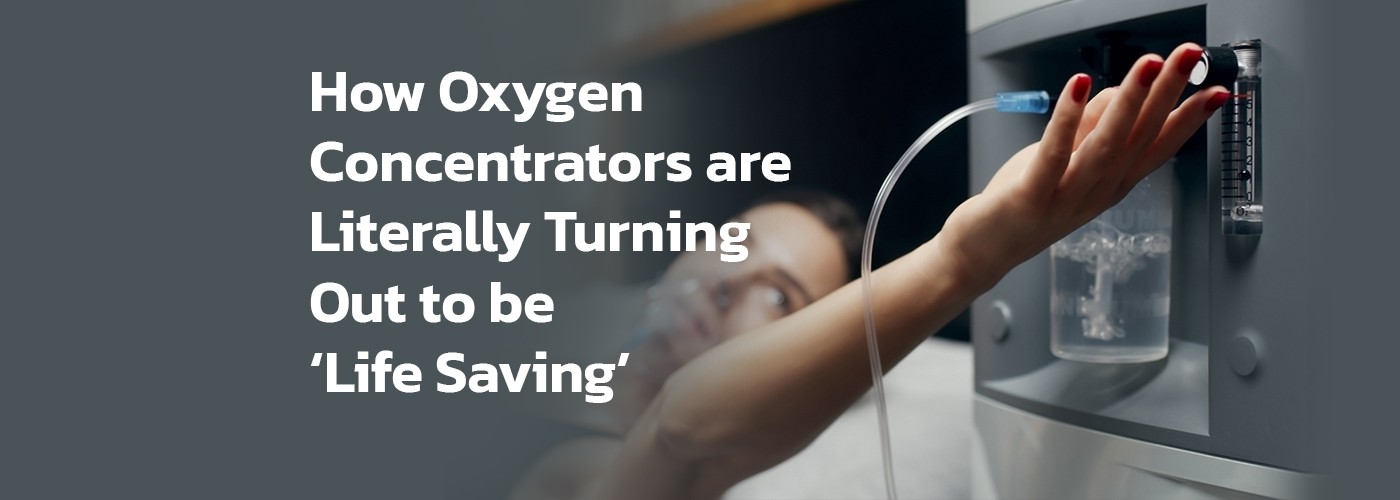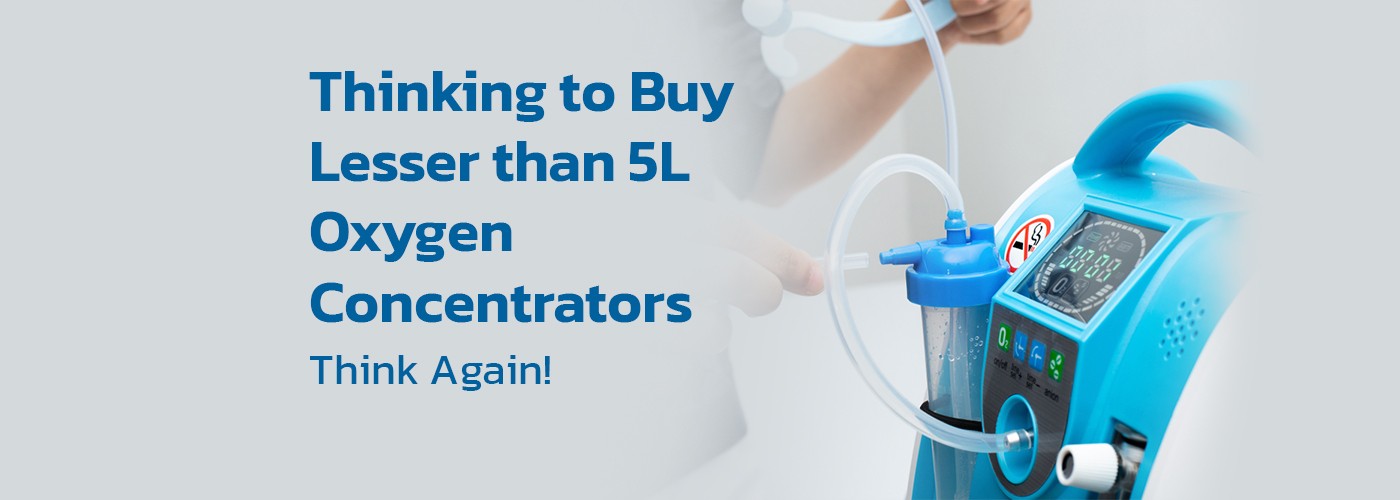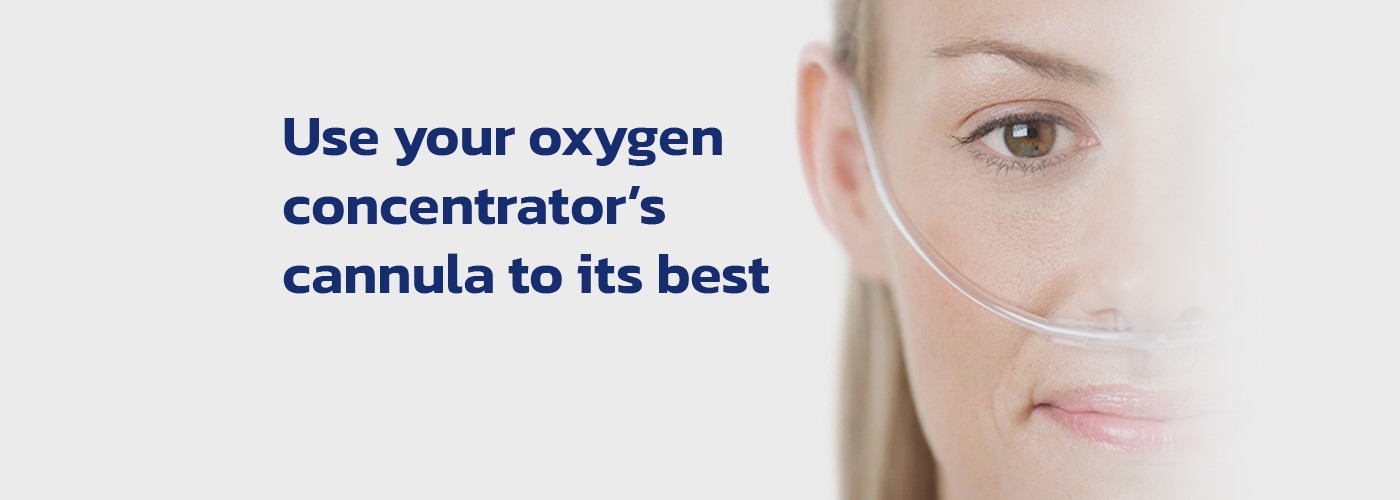How Oxygen Concentrators are Literally Turning Out to be ‘Life Saving’

People are rushing from one corner to the other in order to arrange for hospital and ICU beds, life-saving medicine, ventilators, and, most crucially, ‘oxygen’ to rescue their loved ones as India grapples with the Coronavirus pandemic. The current state of affairs is such that getting these fundamental essentials has become extremely difficult since the availability of these items is far less than what the country needs to win this struggle.
Oxygen Concentrators have proven to be “life-saving” for persons who are in the slightest afflicted by COVID-19 and are attempting to heal at home due to a lack of hospital beds in these unprecedented times.
Oxygen Concentrators: Their Nature and Role
An oxygen concentrator is medical-grade equipment that is larger than a computer display in size. It works by concentrating oxygen from the surrounding air and making it easier for the patient to breathe.
The atmospheric air that we breathe in comprises roughly 78 percent nitrogen and 21% oxygen. The remaining 1% is made up of numerous gaseous gases.
This air is sucked into an oxygen concentrator, which filters it through a sieve/filter before releasing the nitrogen back into the atmosphere. A cannula is used to deliver filtered oxygen to the patient.
These concentrators provide 90-95 percent pure oxygen, according to research. “Concentrators may function and create oxygen 24 hours a day, seven days a week, and may last up to five years,” the World Health Organization (WHO) claimed in 2015.
Who requires an Oxygen Concentrator?
People should start using concentrators when their oxygen saturation level drops below 94 percent, as most Indian states are currently experiencing oxygen scarcity. It’s worth noting that an oxygen saturation level of 94-100 percent is regarded as safe and healthy.
These concentrators are most useful in patients whose oxygen saturation does not go below 90%, although they can even aid individuals whose oxygen saturation falls below 85%. Patients whose oxygen levels fall below this level will need a higher oxygen flow than these concentrators can provide.
Do Oxygen Concentrators of Different Types Exist?
Yes. Continuous flow and pulse dosage concentrators are the two main types of concentrators.
If not switched off, continuous flow concentrators continue to deliver the same amount of oxygen every minute. Pulse dosage concentrators are a little smarter, reading the patient’s breathing pattern and releasing O2 when inhalation is detected. The per-minute oxygen dispensation will differ in the second type.
How do Oxygen Concentrators differ from LMOs and Cylinders?
These are the best cylinder and LMO alternatives, which are difficult to travel and store. Furthermore, cylinders must be refilled, whereas concentrators may produce oxygen using only ambient air and a power supply for up to five years or more.
What should you look for before leasing out or purchasing an oxygen concentrator?
According to experts, a patient’s oxygen percentage in the lungs increases to 24 percent when given one liters of oxygen through a concentrator, 28 percent with two liters, and 60 percent with ten liters. The amount of oxygen per minute must be adjusted to meet the requirements.
A physician must be consulted to determine the amount of oxygen required per minute, and a pulse oximeter must be used to monitor oxygen saturation. The number of sieves/filters employed in the concentrator determines the quality of the oxygen produced, which is measured in liters per minute output rather than weight. These concentrators should weigh no more than 27kgs.
The quality of oxygen produced may deteriorate if the concentrator becomes hot while in use. As a result, it should only be used when absolutely necessary.
All in all, the upshot is that the coronavirus pandemic has sparked a massive increase in oxygen concentrator sales in India, with demand going through the roof. Previously, the demand for 40,000 concentrators each year was 40,000 per month, but currently, it is 30,000-40,000 per month. Clearly, with COVID-19 infecting roughly 4 lakh people on a daily basis, these concentrators have the potential to save the Indian healthcare system.




